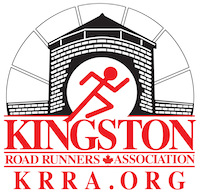KRRA
The Historic Half Marathon
KRRA member Curtis R, conceived the idea that we name the Limestone Race Weekend’s Half Marathon: The Historic Half. The idea is to share with the public, the fascinating historic sites which dot the half marathon’s race route.
Here are the results of Curtis’ hard work and research. Enjoy…
The Historic Half Marathon
- Kingston City Hall
- Confederation Basin and Shoal Tower
- Market Square
- The Wolfe Island Ferry and Wolfe Island
- Wolfe Island Wind Farm
- The Tragically Hip Way
- Fort Frontenac National Historical Site
- Lasalle Causeway
- The Cataraqui River and The Rideau Canal
- Royal Military College
- Fort Henry National Historic Site of Canada
- Prince George Hotel
- The Spirit of Sir John A Train
- Marine Museum of the Great Lakes at Kingston/CCGS Alexander
- Pump House Steam Museum
- Sir John A. MacDonald Statue and Bellvue House
- Murney Tower National Historic Site of Kingston
- Kingston General Hospital
- Frontenac County Courthouse
- Irish Memorial
- Queen’s University
- Kingston Penitentiary
- Portsmouth Village
- Portsmouth Olympic Harbour
- Portsmouth Tavern
- The Church of the Good Thief
- Rockwood Asylum (Kingston Psychiatric Hospital)
Kingston City Hall
“Kingston City Hall, one of the finest 19th century buildings in Canada and a nationally designated heritage site, is toured by thousands of tourists and local citizens each year. Kingston’s historic City Hall has housed governments, a bank, dry goods, and the body of Sir John A. Macdonald. This historic building still functions as the City’s administrative centre.”
Source: HYPERLINK “https://www.cityofkingston.ca/city-hall/about-city-hall” https://www.cityofkingston.ca/city-hall/about-city-hall
Confederation Basin and Shoal Tower
“Shoal Tower is a HYPERLINK “http://en.wikipedia.org/wiki/Martello_tower” \o “Martello tower” Martello tower located in the harbour (Confederation Basin) of HYPERLINK “http://en.wikipedia.org/wiki/Kingston,_Ontario” \o “Kingston, Ontario” Kingston, Ontario, HYPERLINK “http://en.wikipedia.org/wiki/Canada” \o “Canada” Canada, directly opposite Kingston City Hall. It is one of four such towers built in the 1840s to protect Kingston’s harbour and the entrance to the HYPERLINK “http://en.wikipedia.org/wiki/Rideau_Canal” \o “Rideau Canal” Rideau Canal.”
Source: HYPERLINK “http://en.wikipedia.org/wiki/Shoal_Tower” http://en.wikipedia.org/wiki/Shoal_Tower
Market Square
“The Kingston Public Market is the oldest market in Ontario. Since its official founding in 1801 the market has operated as a community gathering place and has played an integral role in Kingston and our country’s history.”
“An informal market was established on the same site in 1788 that the market now operates on today. As the Kingston population grew in the late 18th century, the market acted as the centre of the local economy and community. It was the Kingston Market Square that Lieutenant Governor Sir John Graves Simcoe chose as the location to proclaim the Constitutional Act which established Upper Canada as a separate jurisdiction on 8 July 1792.”
Source: HYPERLINK “http://www.carf.info/kingston-past/kingston-archaeology/market-square” http://www.carf.info/kingston-past/kingston-archaeology/market-square
Wolfe Island and Wolfe Island Ferry
“Wolfe Island, located directly opposite the City of Kingston, forms a natural boundary between Canadian and United States shores, at the entrance to the St. Lawrence River.
Source: HYPERLINK “http://www.wolfeisland.com/mtarchives/000129.php” http://www.wolfeisland.com/mtarchives/000129.php
“According to local historian Winston M. Cosgrove, archaeological evidence places the Indian presence on the island to as early as 700 B.C. … The French Explorer Samuel de Champlain is believed to be the first explorer to find the island, in 1615. At this time, the island was called Ganounkouesnot by the local Indians, meaning “Long Island Standing Up”. The French King Louis XIV granted the island to famous explorer Robert de LaSalle in 1675. During this time the island was referred to as Long Island or Grand Island. … The island was renamed Wolfe Island after English General James Wolfe, who died heroically during the French and Indian War.”
Source: HYPERLINK “http://traveltips.usatoday.com/history-wolfe-island-kingston-ontario-60228.html” http://traveltips.usatoday.com/history-wolfe-island-kingston-ontario-60228.html
Wolfe Island Wind Farm
“The 86-turbine farm opened in 2009 and is the second largest in Canada, providing 198 megawatts of power.”
Source: HYPERLINK “http://traveltips.usatoday.com/history-wolfe-island-kingston-ontario-60228.html” http://traveltips.usatoday.com/history-wolfe-island-kingston-ontario-60228.html
The Tragically Hip Way
“One of Canada’s most acclaimed bands in the last 25 years, all five musicians in The Tragically Hip are from Kingston, Ontario. Since forming ‘The Hip’ in 1983, the group has released 12 studio albums, two live albums, one EP, and 54 singles and nine of their albums have reached no. 1 in Canada. Meeting in residence at Queen’s University, the five band members – Gordon Downie, Paul Langlois, Rob Baker, Gord Sinclair and Johnny Fay – continue to perform and release both albums as a group and pursue successful solo projects.”
“In 2008, the iconic Kingston band officially opened the new K-Rock Centre – a 5700 seat entertainment venue in the heart of downtown Kingston. In 2012, Kingston City Council voted to rename the street that runs in front of the Rogers K-Rock Centre to The Tragically Hip Way.”
Source: HYPERLINK “http://www.seriouslysmartkingston.com/tragically-hip/” http://www.seriouslysmartkingston.com/tragically-hip/
Fort Frontenac National Historical Site
“Fort Frontenac was a French trading post and military fort built in 1673 at the mouth of the Cataraqui River where the St. Lawrence River leaves Lake Ontario, in a location traditionally known as Cataraqui.”
Source: HYPERLINK “http://en.wikipedia.org/wiki/Fort_Frontenac” http://en.wikipedia.org/wiki/Fort_Frontenac
“Fort Frontenac occupies a site of national historic significance. Not only is the Fort
central to the military history of Canada, it is also one of the earliest sites of permanent European habitation in Ontario. Located at a strategic crossroads of the St Lawrence River and Lake Ontario, the Fort and the ships based in its harbour, were intended to control all traffic in eastern North America.”
Source: HYPERLINK “http://www.forces.gc.ca/assets/FORCES_Internet/docs/en/training-establishments/ff-history-cacsc-eng.pdf” http://www.forces.gc.ca/assets/FORCES_Internet/docs/en/training-establishments/ff-history-cacsc-eng.pdf
The Lasalle Causeway
“The LaSalle Causeway links downtown Kingston to Pittsburgh near the mouth of the Cataraqui River. It was built in 1917 replacing the 1829 ‘Penny Bridge’, a wooden toll bridge with a swing section to allow passage of marine vessels. The first permanent crossing was a cable ferry built in 1786.”
Source: HYPERLINK “http://www.tpsgc-pwgsc.gc.ca/ontario/lasalle-eng.html” http://www.tpsgc-pwgsc.gc.ca/ontario/lasalle-eng.html
The Cataraqui River and The Rideau Canal
“The Cataraqui River is the southern entrance to the Rideau Canal, a designated UNESCO world heritage site. The canal system, which links Lake Ontario to Ottawa through a system of locks is operated by Parks Canada. The LaSalle Causeway provides marine access to the canal and the inner harbour of Kingston.”
Source: HYPERLINK “http://www.tpsgc-pwgsc.gc.ca/ontario/lasalle-eng.html” http://www.tpsgc-pwgsc.gc.ca/ontario/lasalle-eng.html
Royal Military College
“RMC is now over one hundred years old. It was established by an act of the Canadian Parliament in 1874 “for the purpose of providing a complete education in all branches of military tactics, fortification, engineering, and general scientific knowledge in subjects connected with and necessary to thorough knowledge of the military profession.” On June 1, 1876, the Military College of Canada opened its doors to the first class of eighteen gentlemen cadets. These are the “Old Eighteen,” known by name to all cadets today. Two years later, in 1878, Her Majesty, Queen Victoria, granted the College the right to use the prefix “Royal.”
Source: HYPERLINK “http://www.rmc.ca/about-apropos-eng.php” http://www.rmc.ca/about-apropos-eng.php
Fort Henry National Historic Site of Canada
“Fort Henry National Historic Site of Canada is a 19th-century British military fortress situated on Point Henry between the mouth of Kingston harbour and a second natural harbour at the mouth of the Cataraqui River. It sits high on a natural cliff facing the confluence of the eastern end of Lake Ontario with the beginning of the St. Lawrence River.”
“Construction of Fort Henry by the British military began in 1832, with the addition of ditch towers and commissariat casemates in 1840 to create its present configuration. The fort was garrisoned by units of the British Army until 1870, and then by Canadian forces. Although Fort Henry has never seen military action, it was used as a prison for combatants captured during the 1837-38 Rebellions and again during the first and Second World Wars.”
Source: HYPERLINK “http://www.historicplaces.ca/en/rep-reg/place-lieu.aspx?id=7869” http://www.historicplaces.ca/en/rep-reg/place-lieu.aspx?id=7869
Prince George Hotel
“The Prince George Hotel, one of the oldest buildings in Kingston, has operated as a hotel for 150 years. Today, the Hotel offers 28 charming and spacious rooms across from Kingston’s Confederation Park. The main floor of the hotel houses an authentic Irish Pub, Tir nan Og, as well as, Monte’s, a luxurious martini lounge.”
Source: HYPERLINK “http://www.realontario.ca/index.php/ontario-tourism-listing?pid=7468” http://www.realontario.ca/index.php/ontario-tourism-listing?pid=7468
“The heritage value of the Prince George Hotel lies in being a composition of pre-1850 limestone buildings integrated into a unified facade in 1892. The oldest structure, originally a house, was built between 1817 and 1820. One of the buildings is a good example of the work of Kingston architect William Coverdale. The rear part of the building is a fine example of a terraced commercial row. The lower two storeys are typical of traditional Kingston commercial masonry construction of the mid-nineteenth century.”

Spirit of Sir John A (Engine 1095)
“Engine 1095, also known as ‘The Spirit of Sir John A,’ has provided a favourite photo op for tourists visiting Confederation Park for more than 40 years.”
“The presence of Engine 1095 in Kingston provides a crucial link to the City’s industrial past having been built by the Canadian Locomotive Company Ltd. (CLC), formerly located on the Kingston waterfront.”
“As a symbol of 19th century technology and industry, the continuing existence of Engine 1095 points to a significant period in Kingston and Canada’s history that demands to be preserved and maintained. It also helps to illustrate a significant aspect of Kingston’s history by positioning it as an important industrial and political hub.”
Marine Museum of the Great Lakes at Kingston/CCGS Alexander Henry
“CCGS Alexander Henry is a former Canadian Coast Guard icebreaker. She is currently a museum ship preserved at the Marine Museum of the Great Lakes in Kingston, Ontario.
Built at Port Arthur Shipbuilding Co. Ltd., Port Arthur, she was commissioned into the Department of Transport’s Marine Service as CGS Alexander Henry using the prefix “Canadian Government Ship”.”
“She was transferred in 1962 to the newly-created Canadian Coast Guard and is named after Alexander Henry, an 18th century British explorer and fur trapper.”
“CCGS Alexander Henry served her entire coast guard career on the Great Lakes. She was launched in 1958, commissioned in 1959, and retired from service in 1984 after CCGS Samuel Risley entered service.”
“The ship is available for tours from May – October, weather permitting.”
Source: HYPERLINK “http://www.marmuseum.ca/index.php/visitor-info/alexander-henry” http://www.marmuseum.ca/index.php/visitor-info/alexander-henry
Pump House Steam Museum
“The Pump House Steam Museum is located in one of Canada’s oldest original water works – where steam-powered pumps provided the first running water to Kingston residents from 1850. Only six similar preserved water pumping plants remain in North America.
The museum’s most incredible artefact is the museum itself – where the original pumps are animated and visitors can discover exactly how they worked. Guided or self-guided tours show how steam power was an essential element of the industrial development of Canada and pumped water played a key role in Kingston’s history.”
Source: HYPERLINK “http://steammuseum.ca/about-us/” http://steammuseum.ca/about-us/
Sir John A MacDonald statue
“Few Canadian politicians have had such an impact on Canada as did Sir John A. Macdonald, architect of Confederation and the first Prime Minister of Canada. His greatest achievement was the confederation of the colonies of the United Province of Canada (Ontario and Quebec), Nova Scotia and New Brunswick into the Dominion of Canada in 1867. His policies of westward expansion resulted in a transcontinental nation in 1871 and the construction of the Canadian Pacific Railway by 1885. As Prime Minister, he led the development of the country from the four provinces of the original Canada to seven provinces (adding Manitoba, 1870; British Columbia, 1871; Prince Edward Island, 1873), so that by the time Macdonald died in 1891 the foundation for the nation had been well laid.”
“Following Macdonald’s death in 1891, Kingstonians put forward a number of ideas to honour his memory. Of those that were implemented, the most tangible was the erection of a statue in City Park at the corner of West and King Street East (5). A plaque was placed on the statue much later. Kingston and Macdonald were inextricably linked in the 19th century, a relationship which has been well remembered and marked in the 20th century. Every year on June 6th, the anniversary of Macdonald’s death, the Kingston Historical Society organizes a memorial service in honour of Kingston’s most famous son.”
Bellevue House
“Bellevue House was once the home of Sir John A. Macdonald, Canada’s first prime minister. Restored to the 1840s period, and staffed by costumed interpreters, the house and gardens are kept much as they would have been during the time that Macdonald lived here with his wife and infant son.”
HYPERLINK “http://www.pc.gc.ca/eng/lhn-nhs/on/bellevue/natcul.aspx” \o “Learn More”
“Bellevue House was built in the early 1840s for Charles Hales, a successful Kingston grocer. Asymmetrical in shape, with decorative balconies and a three-storey central tower, Bellevue contrasted with the traditional Georgian architecture of Kingston houses.”
“The extensive grounds at Bellevue House were an important consideration in John A. Macdonald’s decision to rent this property. He wrote of the “…complete and quiet seclusion of the house, which is completely surrounded with trees and has a fresh breeze ever blowing on it from Lake Ontario…” The grounds of Bellevue House today are much as they were when the Macdonald’s lived here almost 150 years ago.”
Source: HYPERLINK “http://www.pc.gc.ca/eng/lhn-nhs/on/bellevue/natcul.aspx” http://www.pc.gc.ca/eng/lhn-nhs/on/bellevue/natcul.aspx
Murney Tower National Historic Site of Kingston
“Built in 1846 as part of the defensive Martello tower fortifications of Kingston, this museum has 3 floors displaying a collection of military and domestic artifacts of 19th-century Kingston.”
Source: HYPERLINK “http://www.kingstonmuseums.ca/murney-tower-national-historic-site-of-canada” http://www.kingstonmuseums.ca/murney-tower-national-historic-site-of-canada
“The name Martello is a corruption of the word Mortella, which refers to Mortella Point on the Mediterranean Island of Corsica. In 1794, the British Navy attacked an ancient watch tower on Mortella Point that was armed and manned by the French military. The British fired at the tower with two ships and a total of 104 guns. Despite the heavy bombardment, the tower experienced little damage. Eventually the tower was captured, but not until it was invaded from the landward side. The British were so impressed by this resistance that they copied the simple concept of the tower for use in their own defensive systems, particularly along the south coast of England during the Napoleonic era, and later in British North America. The towers were consequently called Martello Towers. A Martello tower is typically a squat, round, thick-walled tower with guns mounted on a flat roof. Their purpose was to provide concentrated fire on ships, thus repelling an enemy landing. They were capable of withstanding a siege of considerable duration. In 2007, the four Martello towers in Kingston; Murney Tower, Shoal Tower, Cathcart Tower and Fort Frederick Tower, became part of the Rideau Canal and Kingston Fortifications World Heritage Site – the 14th World Heritage Site in Canada and the only one in Ontario.”
Source: HYPERLINK “http://www.kingstonhistoricalsociety.ca/Murney_Tower.html” http://www.kingstonhistoricalsociety.ca/Murney_Tower.html
Kingston General Hospital
“An enduring witness to the evolution of public health care, Kingston General is one of Canada’s oldest functioning hospitals. Most of its early buildings have survived, notably the Main Building (1833-35) and the Watkins Wing (1862) which date to a time when hospitals were places for the care of the poor. Expansion in the late-19th and early-20th centuries marked the transformation of this charitable hospital into a centre of scientific medicine. The Nickle Wing for patients with infectious diseases, the Doran Building for the care of women and children, and the Fenwick Operating Theatre all date to the 1890s. They show the gradual shift away from treatment in the home in favour of the hospital, which offered new surgical techniques and an antiseptic environment. The new Nurses’ Home, completed in 1904, acknowledged the advance of nursing as a profession critical to the institution. Opened in 1914, the Empire Wing with its private and semi-private rooms demonstrates the hospital’s acceptance by the well-to-do. These early buildings form an integral part of a larger hospital complex that today serves almost 500,000 people, and continues to reflect new approaches to medical treatment. In 2013, Kingston General Hospital marks 175 years since receiving its first patients – 20 men, wounded during the Battle of the Windmill who were transported to the Main Building for care in 1838.”
Source: HYPERLINK “http://www.canadashistory.ca/Destinations/Historic-Sites/Articles/ON/Kingston-General-Hospital-National-Historic-Site” http://www.canadashistory.ca/Destinations/Historic-Sites/Articles/ON/Kingston-General-Hospital-National-Historic-Site
Frontenac County Court House
“The Frontenac County Court House was built 1855-1858 and was designed by architect Edward Horsey in a Neoclassical style. After the 1874 fire, architect John Power redesigned the central dome on a drum lit by 16 arched windows with construction being undertaken by contractor George Newlands. The Court House sits at the top of a gentle incline and overlooks a wide expanse of park to the shoreline of Lake Ontario. It is located in a downtown residential area of 19th-century homes and adjacent to Queen’s University. A fountain was built in front of the Court House in 1903 to the memory of Sir George Airey Kirkpatrick.”
Source: HYPERLINK “http://archive.cityofkingston.ca/residents/culture/heritage/courthouse.asp” http://archive.cityofkingston.ca/residents/culture/heritage/courthouse.asp
An Gorta Mór Park and Celtic Cross Monument
Erected by the Kingston Irish Famine Commemoration
“Celtic Cross Monument. At least 1,400 Irish emigrants, many who just survived Grosse Ile, died here and were buried in a mass grave on the grounds of Kingston General Hospital. A Celtic Cross was erected by the Kingston Irish Famine Commemoration Association at Ontario and West Streets on May 22, 1998.”
Source: HYPERLINK “http://www.digitalkingston.ca/genealogy.htm” http://www.digitalkingston.ca/genealogy.htm
Queen’s University
“Queen’s is one of Canada’s oldest degree-granting institutions, and has influenced Canadian higher education since 1841 when it was established by Royal Charter of Queen Victoria.”
Source: HYPERLINK “http://www.queensu.ca/discover/quickfacts” http://www.queensu.ca/discover/quickfacts
Kingston Penitentiary
“Canada’s oldest prison, Kingston Penitentiary (KP) was home to many of the country’s most notorious criminals from 1835 to 2013. The sprawling prison complex on Lake Ontario has been deeply entwined with Kingston’s history and civic identity”
Source: HYPERLINK “http://agnes.queensu.ca/exhibition/geoffrey-james-inside-kingston-penitentiary/” http://agnes.queensu.ca/exhibition/geoffrey-james-inside-kingston-penitentiary/
“Opened in 1835, Kingston Penitentiary in Ontario is a model of old-school incarceration: the Doric columns at the gatehouse, the grand stone archways and staircases, the bell tower, the cells with barred doors that face inward into open wards.”
“When its gates shut for the final time in September 2013, Kingston Penitentiary was among North America’s oldest operating prisons. Notorious killers— HYPERLINK “http://thewalrus.ca/boy-next-door/” \t “_blank” Paul Bernardo, HYPERLINK “http://www.theglobeandmail.com/news/national/the-life-and-death-of-clifford-olson/article4197011/?page=all” \t “_blank” Clifford Olson, HYPERLINK “https://www.youtube.com/watch?v=zLJzNpVrcGU” \t “_blank” Russell Williams—slept in its cells and exercised in its yards, but James didn’t focus on the lives and personal effects of infamous inmates.”
Source: HYPERLINK “http://thewalrus.ca/time-served/” http://thewalrus.ca/time-served/
Portsmouth Village
“Originally part of Kingston Township, this area was granted to United Empire Loyalists in 1784.”
“A village first known as “Hatter’s Bay” grew in response to the establishment of the provincial penitentiary in 1833, and was formally incorporated in 1858.”
“Many interesting early stone, brick, and frame buildings have survived in this area.”
Source: HYPERLINK “http://archive.cityofkingston.ca/residents/culture/heritage/portsmouthvillage.asp” http://archive.cityofkingston.ca/residents/culture/heritage/portsmouthvillage.asp
Portsmouth Olympic Harbour
“Just minutes from the downtown in historic Portsmouth Village. Portsmouth Oympic Harbour provides a relaxed park-like setting with walkways along the water. Built for the 1976 Olympics, the harbour continues to host several Canadian Olympic Training Regattas (CORK) every year and other community events.”
Source: HYPERLINK “https://www.cityofkingston.ca/residents/recreation/facilities/marinas/portsmouth-olympic-harbour” https://www.cityofkingston.ca/residents/recreation/facilities/marinas/portsmouth-olympic-harbour
Portsmouth Tavern
“In its early days, the Kingston area was renowned for its shipyards and rich marine traditions. On the outskirts of town, at Hatter’s Bay in Portsmouth Village, a marine railway hauled vessels in need of repair in and out of the waters of the lake. One family of ship’s carpenters, the Beaupres, purchased the land at the corner of Yonge Street and Grange Street in the settlement of Portsmouth and by the late 1860s had constructed a frame building on the site. First named The Farmer’s Inn, and then The Portsmouth Public House, the food and beverage business stayed in the Beaupre family until 1974. With a change in ownership came a change in name and in the late 1980s the local watering hole became known as The Portsmouth Tavern. To locals and regulars, it is simply called “The Ports,” and to old-timers, “Beaup’s.””
Source: HYPERLINK “http://www.kingstonlife.ca/sitepages/?aid=7310&cn=Food%20&%20Drink%20&an=Food%20&%20Drink%20-%20In%20Good%20Taste%20-%20Historic%20Properties” http://www.kingstonlife.ca/sitepages/?aid=7310&cn=Food%20&%20Drink%20&an=Food%20&%20Drink%20-%20In%20Good%20Taste%20-%20Historic%20Properties
The Church of the Good Thief
“The Parish was formed in 1894 when the Church was built at the cost of $14,297.00. Native limestone, of which the building is constructed, was quarried by the prisoners of Kingston Penitentiary and carried by these men to the site of the church. Each man was given 25c a day for his labour. When appointing the first pastor for this new parish, Archbishop Cleary provided a strong link between the Church and the prisoners by also naming him Chaplain for the penitentiary.”
Source: HYPERLINK “http://www.goodthiefchurch.ca/history.html” http://www.goodthiefchurch.ca/history.html
Kingston Psychiatric Hospital (Rockwood Asylum)
“Construction of Rockwood Asylum began in 1859 to house the “criminally insane” of Kingston Penitentiary. The Asylum’s site overlooking Lake Ontario was thought to have a calming effect on patients. The new limestone edifice – still situated near here – began accepting non-criminal patients in 1868. Rockwood became part of the Ontario provincial asylum system in 1877.”
“Kingston Penitentiary convicts were conscripted to build Rockwood”
“Rockwood’s architecture and beautiful site were a point of civic pride for Kingstonians and regularly featured on postcards in the early 1900s.”
Source: HYPERLINK “http://www.museumofhealthcare.ca/explore/exhibitions/rockwood-asylum.html” http://www.museumofhealthcare.ca/explore/exhibitions/rockwood-asylum.html













